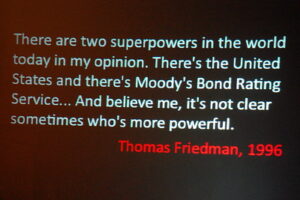If you have time, visit the College Board website and read the Trends in College Pricing and Student Aid 2020. This recently released report provides updated information about cost-of-attendance for both two-year and four-year institutions. It also provides state-level data. There is one section that helps to explain the impact of the wealth gap, and why community college opportunities are so important.
The “Family Income” section is telling. It examines the family income of college students between 1989 and 2019. In 1989, the average family income of the lowest earning 20% was $18,890. Thirty years later, the average family income of the least wealthy quintile was $22,840. That is a difference (in inflation-adjusted dollars) of $3,950. Over the space of 30 years, household income increased by 21%. The lowest-earning families managed to increase their household wealth by $11 per month.
Conversely, the average family income of the highest earning 20% of families with college students increased from $184,980, in 1989 to $289,140. That is a difference of $104,250. Family income in the highest quintile of households increased by 56.3%. For families in the top 5%, the difference was even more pronounced. Household income of the highest earning 5% of families increased from $296,330 to $511,290. That is a difference of $214,960, and an increase of 72.5%.
In 1989, the highest-earning households earned an average of 15.7 times as much income as the lowest earning households. By 2019, the highest earning households earned 22.4 times as much as those in the bottom 20%. The highest earning families increased their household wealth by $600 per month in the years between 1989 and 2019.
Community college is a viable route out of poverty
The higher your household income quintile is, the less important increases in tuition become. When you are only increasing your household income by $11 per month, a tuition increase of any kind is intolerable. When you live in poverty, an increase of $10 per credit hour will consume an entire year’s income gains in a single semester.
It is also not hard to understand why Trustees from households in the highest income quintiles do not see $10 tuition or fee increases (or uncontrolled executive hiring, for that matter) as a problem. For them, it is not a problem. But for low-income students – the people for whom the community college was built – it is a major problem.
Raising tuition when the Chief Executive runs out of money to spend is not a solution for the bottom quintile of households. For that matter, it is not a solution for the second-lowest quintile of households, either. And it is not a solution for the community that build and paid for a resource that is supposed to provide an affordable pathway out of poverty for those at the bottom.
The Board of Trustees exists for a reason, and it is not to rubber-stamp reckless spending decisions by College executives who firmly believe we all live “in a rich community.”
Photo Credit: Logan LeGrand, via Flickr


























